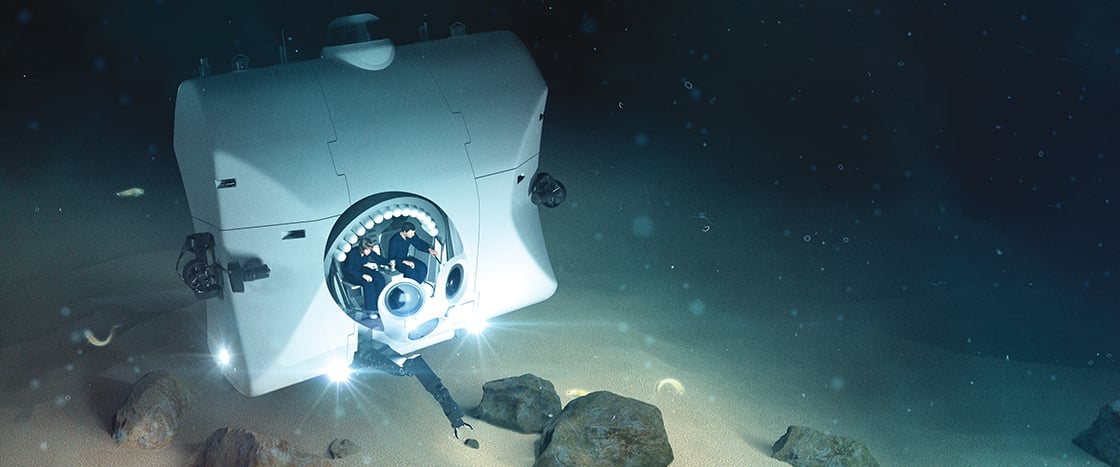Outside the submersible, the water was blacker than black. Pilot Victor Vescovo had been sinking deeper and deeper into the Pacific Ocean for four hours. His destination: a narrow underwater depression called the Mariana Trench.
The descent was quiet. Then all of a sudden, the sub gently touched the ocean floor, sending up a cloud of fine sand. “At bottom! Repeat, at bottom!” Vescovo announced into a microphone. On a ship at the surface, his team erupted in cheers. At more than 10,920 meters (35,827 feet) underwater, Vescovo had reached the deepest known point on the planet.
The dive was part of the Five Deeps Expedition. That mission explored the deepest spots in each of Earth’s five oceans (see Deep Dives). Along the way, researchers discovered new landforms and organisms. “We are getting to do true exploration to places no one has ever been to before,” says Vescovo, who led the expedition.
Victor Vescovo was driving an underwater vehicle. The water was blacker than black outside. He had been sinking for four hours. His submersible was going deeper and deeper. It dove into the Pacific Ocean. He was headed for a long underwater valley. It’s called the Mariana Trench.
The sub drifted down quietly. Then it hit the ocean floor all of a sudden. It sent up a cloud of fine sand. “At bottom! Repeat, at bottom!” Vescovo said into a microphone. His team was on a ship at the surface. They began to cheer. Vescovo was more than 10,920 meters (35,827 feet) underwater. He had reached the deepest known point on the planet.
The dive was part of the Five Deeps Expedition. The mission visited Earth’s five oceans. It explored the deepest spots in each one (see Deep Dives). Its scientists found new landforms and creatures along the way. Vescovo led the expedition. “We are getting to do true exploration to places no one has ever been to before,” he says.

